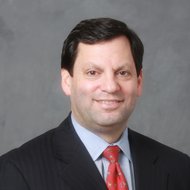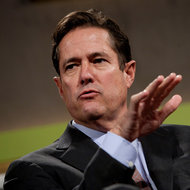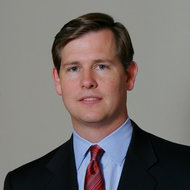 Matthew Zames was promoted to co-chief operating officer of JPMorgan Chase.
Matthew Zames was promoted to co-chief operating officer of JPMorgan Chase.
Adjusting to a shifting banking landscape, JPMorgan Chase broadly reshuffled its management ranks on Friday and united some of its business operations.
The moves, coming months after the bank announced a multibillion-dollar loss on a soured trade, are intended to strengthen JPMorgan’s focus on its clients, especially as profits in other areas are threatened by regulatory changes and the gloom in Europe.
Much of the change centers on combining the bank’s central businesses. Under the new organization, JPMorgan’s consumer businesses will be under one awning, and its investment banking and treasury operations will be under another. “It’s a natural progression,” said Jamie Dimon, the bank’s chief executive.
Revolving Door
View all posts
Related Links
By making such a clear delineation, some bank analysts said, JPMorgan is also implicitly mounting a defense against calls for the big banks to be broken up. Those cries gathered steam earlier this week, when Sanford I. Weill, who forced Mr. Dimon, his former lieutenant, out of Citigroup in 1998, said that behemoth financial institutions should split their investment banking businesses from their deposit-taking operations. As the executive who built Citigroup, Mr. Weill had earlier led a charge to lift the Depression-era ban on commercial banks doing investment banking.
Mike Mayo, an analyst with Crédit Agricole Securities, said JPMorgan’s moves were aimed at showing that plain-vanilla banking operations are entirely cordoned off from the bank’s potentially risky investments.
As part of the realignment, JPMorgan promoted a number of younger executives, including Matthew E. Zames and Michael J. Cavanagh, generating new speculation about who may succeed Mr. Dimon. Still, people close to the bank say Mr. Dimon, who is 56, does not have plans to hand over the reins for at least five years.
 Frank Bisignano was promoted to co-chief operating officer of JPMorgan Chase.
Frank Bisignano was promoted to co-chief operating officer of JPMorgan Chase. Scott Eells/Bloomberg NewsJames Staley will become chairman of JPMorgan Chase’s corporate and investment bank.
Scott Eells/Bloomberg NewsJames Staley will become chairman of JPMorgan Chase’s corporate and investment bank. Michael Cavanagh will become co-chief executive of JPMorgan Chase’s corporate and investment bank.
Michael Cavanagh will become co-chief executive of JPMorgan Chase’s corporate and investment bank.
Both Mr. Cavanagh and Mr. Zames have been in the spotlight over the last three months as JPMorgan works to contain the damages from the trading debacle — a rare black eye for Mr. Dimon, once considered among the most deft risk managers on Wall Street.
In May, Mr. Zames, 41, took over the bank’s chief investment office, the powerful unit at the center of the losing trade. He succeeded Ina Drew, who was one of the more notable casualties of the trade, which has grown to $5.8 billion in losses. Mr. Zames will become JPMorgan’s chief operating officer, a role he will share with Frank Bisignano. Under the realignment announced on Friday, Mr. Zames will still oversee the chief investment office and mortgage capital markets.
Like Mr. Zames, Mr. Bisignano, 52, was tapped last year to be a kind of fix-it man. In his case, it was JPMorgan’s struggling mortgage business.
One little noticed element of the reorganization is its impact on Douglas L. Braunstein, the bank’s chief financial officer. Although Mr. Braunstein, 51, will keep his position, he will no longer report to Mr. Dimon, but instead to Mr. Zames.
Bank executives are split on how to interpret the moves. Some see the change as simply a long-planned promotion for Mr. Zames. But others, who did not want to be named because of the sensitivity of the issues, wondered whether the move was a demotion for Mr. Braunstein.
Just weeks before the trading error, Mr. Braunstein dismissed concerns about the trading that would later blow up in the bank’s chief investment office. In an interview, Mr. Braunstein said he was “very comfortable with the positions we have.”
Under the management changes, Mr. Cavanagh, 46, who used to be the bank’s chief financial officer and now leads the treasury and securities services, will become co-chief executive of the corporate and investment bank. Daniel E. Pinto, 49, who heads the bank’s business in Europe, the Middle East and Africa as well as its global fixed-income business, will oversee all trading businesses and become co-chief executive with Mr. Cavanagh.
Signs of the latest shifts appeared when JPMorgan announced second-quarter earnings this month. On a conference call with analysts, Mr. Cavanagh, who was deputized by Mr. Dimon to lead a kind of financial autopsy of the chief investment unit, described what went wrong at the unit, pointing to fundamental flaws in risk management.
Mr. Cavanagh has long been a valuable lieutenant for Mr. Dimon, senior executives said. As head of strategy and planning at Bank One, he worked closely with Mr. Dimon, a camaraderie he maintained as JPMorgan’s chief financial officer in 2004.
As a result of the shake-up, however, James Staley, 55, who currently is chief executive of JPMorgan’s investment bank, is partly sidelined, some senior executives said Friday. Although Mr. Staley will take on a new role as head of the newly formed corporate and investment bank, some viewed the position as more symbolic than substantial.
“In this role, he will head a group of senior executives who will work together to develop a view of what global banking will look like in the years ahead,” the bank said in a statement. He will continue to serve on the bank’s operating committee.
During Mr. Dimon’s nearly six-year reign, the bank has undergone a number of management revamps. Few of the executives who made up Mr. Dimon’s inner circle during the financial crisis — including Bill Winters, Steve Black and Heidi Miller — remain.
Driving the latest organizational changes, Mr. Cavanagh said, is an overarching desire to improve services for clients and recruit more business. “We can do things that few of our competitors can,” he said in an interview on Friday. He added that the moves allowed JPMorgan to leverage “our size for our clients.”
Although JPMorgan, unlike its rivals, safely navigated the storm of the financial crisis, it is now grappling with the same problems affecting the entire industry. Across the banking sector, revenue from securities and banking are still lackluster as deal volume stays around record lows. As a result, a focus on client services is paramount, banking analysts said. Banks like JPMorgan, they say, cannot depend on profits from trading.
“These companies will live and die on their ability to serve the clients,” said Jason Goldberg, an analyst with Barclays.
JPMorgan is trying to reassure investors that its risk management practices are strong and that the losses are contained. Since disclosing the trading losses in May, the bank has been under close scrutiny. The Justice Department and the Securities and Exchange Commission are investigating the loss. In Washington, some lawmakers have seized upon the losses as further evidence that banks need to scale back their riskiest activities.
In a memo circulated to employees on Friday, Mr. Dimon said: “Periodically, all businesses need to reorganize to set themselves up for continued success.”
Article source: http://dealbook.nytimes.com/2012/07/27/jpmorgan-shakes-up-management/?partner=rss&emc=rss

Speak Your Mind
You must be logged in to post a comment.